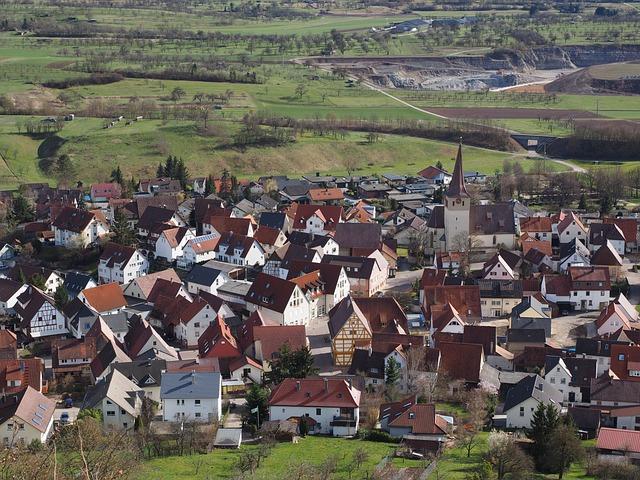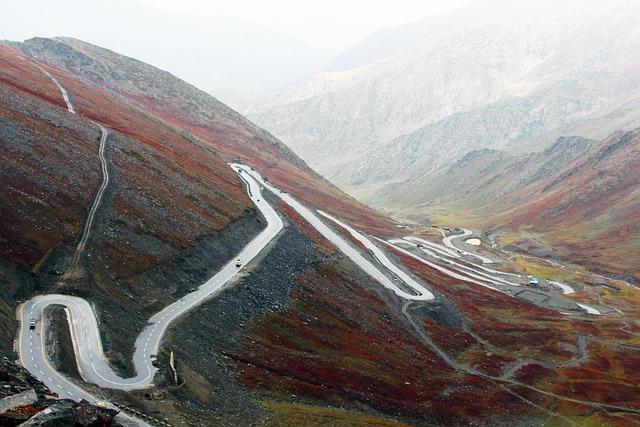In the heart of South Asia lies Pakistan, a nation rich in history and potential but grappling with the pressing need for infrastructural renewal. As the echoes of its past reverberate through bustling streets and serene landscapes, the country stands at a crossroads, caught between the shadows of dilapidated roads, aging bridges, and the promise of modernity that infrastructure revitalization can bring. The challenges are stark—a burgeoning population, climate vulnerabilities, and a legacy of underinvestment—yet amidst these hurdles lie opportunities that, if seized, could usher in a new era of growth and stability. This article delves into the intricate tapestry of Pakistan’s infrastructural landscape, exploring the multifaceted challenges it faces while illuminating the pathways that could unlock its vast potential. As the government, private sector, and civil society converge to forge a collaborative vision for the future, the quest to revitalize Pakistan’s infrastructure beckons us to consider not only the bricks and mortar of construction but the very foundations of economic resilience and social progress.
Transforming Urban Landscapes through Sustainable Planning
The transformation of urban landscapes mandates a rethinking of planning methodologies. By integrating green spaces, renewable energy, and smart technologies, we can create a symbiotic relationship between architecture and nature. This approach not only enhances aesthetic appeal but also improves the livability of cities. Emphasizing mixed-use developments promotes social interaction and economic activity while mitigating urban sprawl. The adoption of sustainable practices in construction can significantly reduce environmental footprints, ensuring that future generations inherit vibrant and resilient communities.
However, the journey towards sustainable urban development in Pakistan is fraught with challenges. These include insufficient infrastructure investment, lack of public engagement in planning processes, and weak regulatory frameworks. To address these hurdles, it is essential to foster collaboration among stakeholders, including government agencies, private sectors, and local communities. Key opportunities exist in harnessing local resources and expertise to drive innovative projects that can serve as models of sustainability. Below is a summary of potential opportunities and challenges:
| Opportunities | Challenges |
|---|---|
| Leveraging technology for smart cities | Lack of consistent policy framework |
| Public-private partnerships for funding | Resistance to change within local governance |
| Community-led sustainability initiatives | Limited awareness and education on sustainable practices |
| Investment in green infrastructure | Resource allocation and budgeting constraints |

Harnessing Technology for Smart Infrastructure Solutions
The integration of advanced technology in infrastructure development has the potential to transform Pakistan’s urban landscapes. Smart infrastructure solutions utilize IoT sensors, AI analytics, and real-time data management systems to create more efficient and sustainable urban environments. For example, smart transportation systems can reduce traffic congestion, while energy-efficient buildings can lower energy consumption. This holistic approach allows stakeholders to address urbanization challenges head-on, laying the groundwork for enhanced economic growth and improved quality of life for citizens. Key technologies to consider include:
- Internet of Things (IoT): Connecting devices to optimize resources.
- Geographic Information Systems (GIS): Mapping and analysis for better planning.
- Artificial Intelligence (AI): Smart decision-making for infrastructure management.
Moreover, public-private partnerships can drive investment in smart technology initiatives, aiding the development of digital infrastructure that is both resilient and adaptive. By adopting a framework that prioritizes innovation, the government can facilitate projects that leverage data analytics to inform infrastructure improvements. Potential areas ripe for investment include waste management, water supply systems, and energy networks. A collaborative effort across sectors can accelerate the deployment of these technologies, addressing immediate challenges while fortifying the foundation for future growth. Below is a simple overview of potential investment areas:
| Investment Area | Expected Outcome |
|---|---|
| Smart Water Management | Efficient use of water resources and reduced waste. |
| Intelligent Traffic Systems | Decreased congestion and improved travel times. |
| Renewable Energy Infrastructure | Lower carbon footprint and enhanced energy security. |

Addressing Funding Gaps and Mobilizing Investment
To revitalize Pakistan’s infrastructure, it is essential to acknowledge the significant funding gaps that hinder progress. The government has faced challenges in budget allocation, often leading to crucial projects being stalled. To bridge this divide, it is imperative to explore diverse avenues for funding, including:
- Public-Private Partnerships (PPPs): Encouraging private sector investment to share the financial burden and enhance project efficiency.
- Foreign Direct Investment (FDI): Attracting international investors by showcasing potential returns and stability.
- Development Loans: Collaborating with international financial institutions to secure low-interest loans aimed at infrastructure projects.
- Green Financing: Targeting environmentally sustainable projects that appeal to impact investors and climate-focused funds.
Moreover, creating a robust framework to mobilize investments is vital. This includes establishing a transparent regulatory environment to build investor confidence and minimize risks. A strategic focus on incentivizing investments can attract diverse stakeholders. Key strategies might include:
| Investment Strategy | Potential Benefits |
|---|---|
| Tax Incentives | Encourages local and foreign investment through reduced tax liabilities. |
| Streamlined Approvals | Reduces bureaucratic barriers, enabling faster project initiation. |
| Risk Mitigation Programs | Provides guarantees against unforeseen challenges, appealing to conservative investors. |
By addressing these funding gaps and effectively mobilizing investments, Pakistan can embark on a transformative journey towards revitalizing its infrastructure, ensuring long-term stability and growth for its economy.

Empowering Local Communities for Collaborative Development
Local communities are the backbone of sustainable development, serving as essential partners in revitalizing infrastructure across Pakistan. By fostering a sense of ownership, the collaborative approach harnesses the collective expertise and insights of residents, ensuring that projects genuinely reflect the needs and aspirations of the community. Essential components for successful collaboration include:
- Inclusive Participation: Engaging diverse community members ensures all voices are heard and needs are addressed.
- Capacity Building: Training programs empower locals with skills in project management, maintenance, and operation.
- Resource Mobilization: Encouraging partnerships with NGOs and government bodies to pool resources for impactful projects.
To effectively implement these collaborative frameworks, it is crucial to establish transparent communication channels and set clear goals. Local governance structures must be strengthened to facilitate decision-making and resource allocation. The following table illustrates potential benefits gained from empowered local communities in infrastructure development:
| Benefit | Description |
|---|---|
| Enhanced Resilience | Communities become more adaptive to changes and challenges through shared knowledge. |
| Better Resource Management | Local involvement leads to more efficient use of resources and reduced waste. |
| Increased Accountability | Collaborative efforts encourage transparency, reducing corruption and mismanagement. |
The Conclusion
As we stand at the crossroads of opportunity and challenge in revitalizing Pakistan’s infrastructure, it becomes increasingly clear that the path forward is both complex and promising. The roads we pave and the bridges we build are not merely physical constructs; they are the lifelines of a nation striving for progress and prosperity.
As we embrace this endeavor, a collaborative spirit is essential, uniting government, private sector, and community voices to ensure that our infrastructure not only meets the demands of today but also anticipates the needs of tomorrow. The potential for sustainable development, economic growth, and improved quality of life is immense, yet it requires innovative thinking, robust investment, and a commitment to inclusivity.
This journey will undoubtedly be fraught with hurdles—budget constraints, administrative challenges, and environmental considerations. However, each obstacle presents an opportunity for solutions that can enhance resilience and foster a brighter future. By harnessing our collective expertise and creativity, Pakistan can transform its infrastructure landscape into one that reflects our aspirations and capabilities.
As we conclude this exploration into revitalizing Pakistan’s infrastructure, let us remain optimistic and proactive. The challenges may be great, but the opportunities to build a stronger, more connected, and more sustainable Pakistan are even greater. Together, we can lay the groundwork for a future that not only supports our growing population but also showcases the strength of our unity and vision. The time to act is now—let us seize the moment and build a legacy for generations to come.



